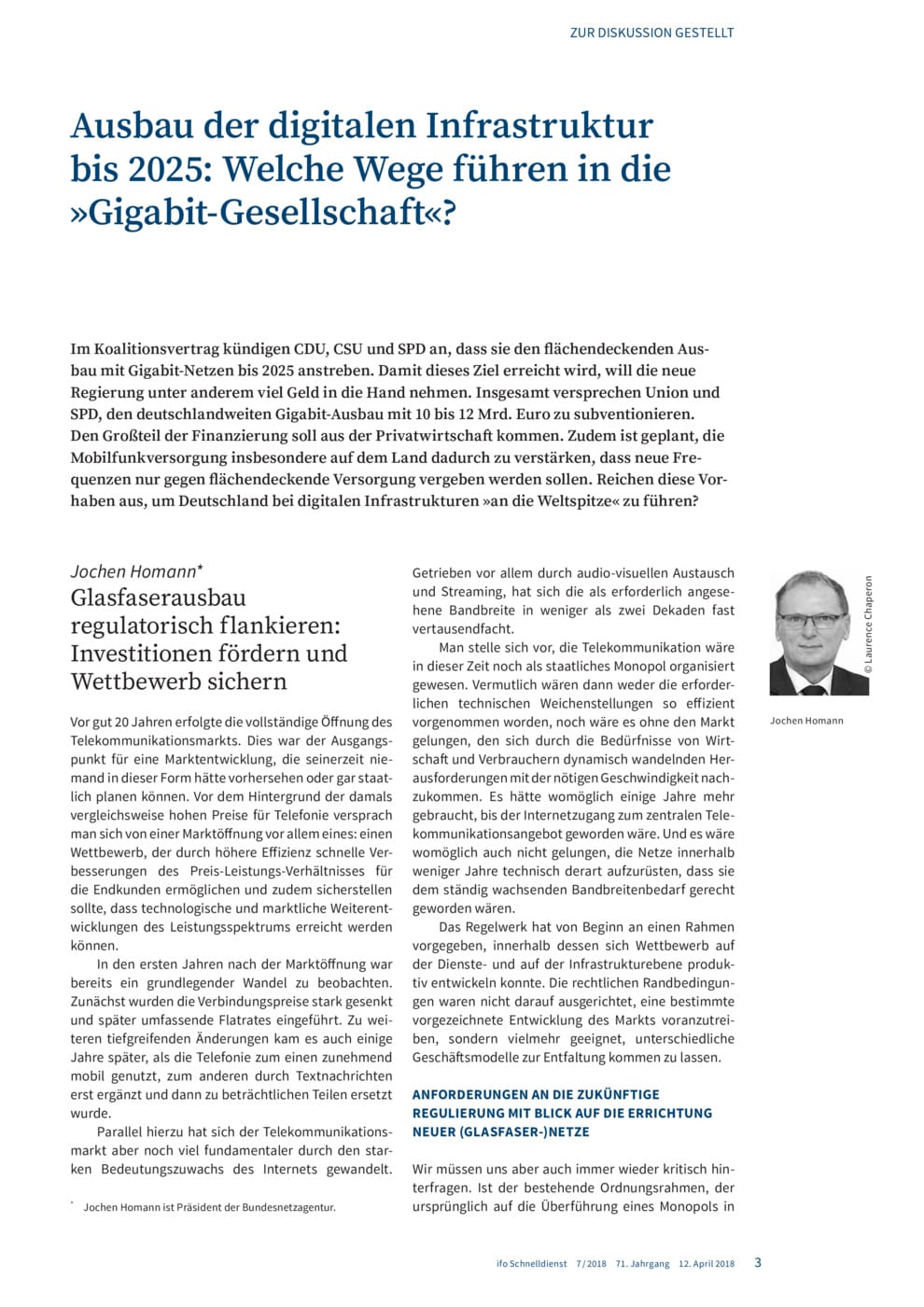Expansion of the Digital Infrastructure up to 2025: Which Paths Lead to the “Gigabit Society?
ifo Institut, München, 2018
ifo Schnelldienst, 2018, 71, Nr. 07, 03-21

In the new government’s coalition agreement, CDU, CSU and SPD expressed their intention of a nationwide expansion of gigabit networks up to 2025. Jochen Homann, Federal Network Agency, questions whether the existing regulatory framework, which was originally intended for the transition from a monopoly to a competition-based system, is still suitable for the challenge of creating new gigabit-capable infrastructures. Torsten J. Gerpott, University of Duisburg-Essen, sees the expansion of fibre optic networks for stationary users as an important step towards improving the digital infrastructure in Germany. His basic question is how a change in the practice for mobile wireless network access licensing can possibly stimulate investment in fifth-generation mobile networks. He comes to the conclusion that wavering auctions for the allocation of frequencies for mobile broadband would be detrimental to Germany on its path to a gigabit society. According to Wolfgang Briglauer, Center for European Economic Research (ZEW), Mannheim, and Ingo Vogelsang, Boston University, in order to pursue the goals of the gigabit society, market processes and outcomes should not be distorted by favouring individual access technologies. Rather, the principle of technology neutrality should be followed. For Jan Krämer, University of Passau, the most important thing is to create reliable regulatory-political foundations for the next 20 years. Iris Henseler-Unger, WIK GmbH, stresses the importance of private-sector involvement in the expansion of a high-performance broadband network as a prerequisite for achieving the “gigabit goal”. Lukas Wiewiorra, University of Frankfurt am Main, believes that increased attention should be given to investment incentives and regulatory approaches as well as to planning security when investing in a fibre optic infrastructure.